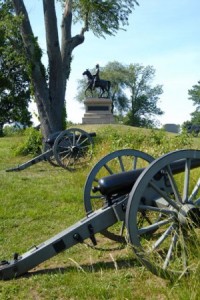Category: The Civil War
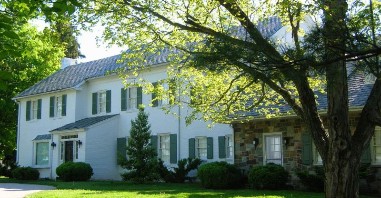
Gettysburg Tours – Group Itineraries for All Interests
April 6, 2017Planning a group tour of Gettysburg doesn’t have to be overwhelming! Gettysburg Group Reservations makes it easy to help plan your military and family reunions, Boy and Girl Scout outings, or other group event.
This is the first of our special group itineraries series, and we’ll start by discussing some group tour options. If you’d like to learn more about any of these, just click on the tour name or feel free to give us a call for more info.
5-Star General Experience In Gettysburg
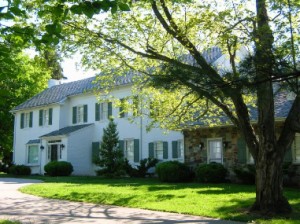 This tour is perfect for anyone interested in interested in the military, President Eisenhower, or the history of Gettysburg. Included in this package is a tour of the Eisenhower National Historic Site, a tour of the US Army Heritage and Education Center, and a 90-minute history walk with a licensed town historian through downtown Gettysburg. Top off your day with a planned lunch or dinner, or visit other interesting sites like the National Cemetery.
This tour is perfect for anyone interested in interested in the military, President Eisenhower, or the history of Gettysburg. Included in this package is a tour of the Eisenhower National Historic Site, a tour of the US Army Heritage and Education Center, and a 90-minute history walk with a licensed town historian through downtown Gettysburg. Top off your day with a planned lunch or dinner, or visit other interesting sites like the National Cemetery.
Farm to Palate in Greater Gettysburg, PA
One of the new featured itineraries for this year takes your group from the farm to the table. Beginning at Eisenhower National Historic Site you’ll explore the Eisenhowers’ home, grounds and show barn that housed award-winning Black Angus cattle. After your trip to the farm you can stop at Reid’s Orchard & Winery, take a tour through Oyler’s Organic Farms, and visit the Hollabaugh Bros. Fruit Farm & Market. Don’t forget a stop at the new Mason Dixon Distillery, and be sure to end your day at the Shriver House Museum now that you better understand what civilian life was like in Gettysburg during the Civil War.
We always recommend spending more than just one day in Gettysburg because there’s just so much to see and do. This group tour offers two days packed full of history to give you the opportunity of experiencing the Battle of Gettysburg from both sides. Visit the Seminary Ridge Museum, take a bus tour with a licensed guide, tour the Jennie Wade House, and enjoy a ghost tour – all in day one! Round out your group visit on the second day with a trip to the Gettysburg National Military Park Visitor Center, a stop at the Shriver House, listening to a Union soldier’s experience at the, and paying your respects at the Gettysburg National Cemetery.
Experience both sides of the war in just one day in another new group tour option we’ve added this year. Your day will begin in Gettysburg and cover some of the key events and locations in the Battle of Gettysburg. From here you’ll head to Antietam (Sharpsburg) and explore the location of another one of the bloodiest battles in the Civil War.
Leave Gettysburg with a better understanding of how the battle was fought with the Billy Yank day trip. Tour the Seminary Ridge Museum, take a Gettysburg bus tour with a licensed battlefield guide, stop by the Gettysburg Heritage center, and round out the day with a stop in Emmitsburg, Maryland for dinner at the Historic Carriage House Inn, after which you’ll see a living history presentation by a union soldier, a general and his wife, or President Lincoln.
If you’re curious how civilians lived during the Civil War, the Civilian Experience is perfect for you. Featured in this group tour is a viewing of the Cyclorama, a guided tour through historic Gettysburg, a meal in one of Gettysburg’s historic Civil War era buildings, stops at historic homes for tales from the families who coped during those frightful three days of fighting, and a stirring presentation from a Union or Confederate soldier.
The Rebel Yell was incredibly distinct and was used to intimidate Union soldiers as well as rally and boost the morale of Confederate troops. See what the battle of Gettysburg was like with a focus on the Confederate perspective. This itinerary includes a visit to the Gettysburg National Military Park Visitor Center, a viewing of the famous Cyclorama, a ride with a licensed battlefield guide on our tour buses, a stop at the Gettysburg Heritage Center, and dinner at the Fairfield Inn, one of the area’s oldest taverns where Robert E. Lee dined during his retreat on July 4th 1863.
The best part about these sample itineraries is that they are all fully customizable, and we’d be more than happy to help discuss interests and options for your group trip to Gettysburg. To get started, give Gettysburg Group Reservations a call at 717-334-6020 or 1-800-447-8788.
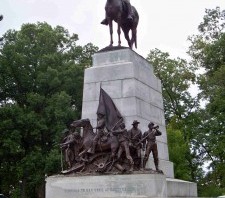
Famous Civil War Horses
May 12, 2016In honor of this month’s Kentucky Derby, as well as the upcoming Preakness and Belmont Stakes, we thought now would be a perfect time to dive into some of the famous horses of the Civil War. Many know about the great men who made their mark on the war, but few know the stories of their trusted companions.
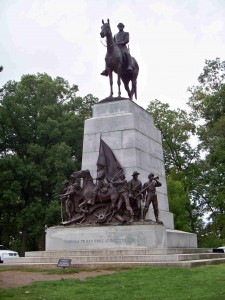
One of the primary means of transportation during the war, horses played an important role in the war effort. We compiled a list of several of the most famous Civil War horses that joined both the north and south in the war effort and we encourage you to learn more about them below.
- Cincinnati – General Ulysses S. Grant’s favorite horse can be found with him at the Ulysses S. Grant Memorial in Washington D.C. Gifted to Grant on the terms that the horse never goes to an owner who would treat it poorly, Cincinnati was the horse Grant rode to negotiate Lee’s surrender at Appomattox Court House.
- Traveller – Like Cincinnati with Grant, Traveller was Robert E. Lee’s favorite horse. The Virginia monument here in Gettysburg features Lee and Traveller. Lee bought the horse shortly after taking a liking to him, and the horse was a trusted companion the rest of Lee’s life.
- Old Baldy – Affectionately named for his white face, Old Baldy was George C. Meade’s horse of choice. Old Baldy had quite a decorated war service, as he was wounded several times, including being shot through the neck at the Battle of Antietam. Fortunately the horse survived each time, and eventually retired to a horse farm near Philadelphia. Today you can find the horse’s head displayed in a glass case in the Meade Room of the Civil War Museum of Philadelphia.
- Winchester (Rienzi) – Initially named Rienzi by owner Phil Sheridan after the Mississippi town his troops were encamped at, the horse was later renamed Winchester following the storied ride from Winchester, Virginia to Cedar Creek. Featured in a poem by Thomas Buchanan Read, which described the powerful and indestructible (it was shot numerous times and always seemed to bounce back) horse carrying a fierce man into battle. Winchester may also have helped Lincoln win re-election. Today, you can find a mounted Winchester at the Smithsonian in Washington D.C.
Humans weren’t the only valiant participants of the war. This brief list provides just a glimpse of the horses and their stories that were a part of the Civil War. On your next visit to Gettysburg, be sure to take notice how many monuments also feature their trusted companions.
Some others we didn’t feature above include Fancy, Kentuck, King Philip, Lancer, Moscow, Rambler, and Tammany. The list is quite extensive, but if you have any favorites to add to the list be sure to leave us a comment below!
26th North Carolina Infantry
March 10, 2016 Many visitors that come to Gettysburg question why there are so few confederate markers on the field. There are a number of reasons – #1 it was a confederate defeat #2 after the war the South was unable to financially channel many funds toward memorials and #3 the North plain & simple really didn’t want them here.
Many visitors that come to Gettysburg question why there are so few confederate markers on the field. There are a number of reasons – #1 it was a confederate defeat #2 after the war the South was unable to financially channel many funds toward memorials and #3 the North plain & simple really didn’t want them here.
One of the few markers here at Gettysburg that honors Confederate soldiers can be found on Meredith Ave. in Reynold’s Woods & belongs to the 26th North Carolina Infantry. Engaged with the Union Iron Brigade on July 1st, this unit suffered very heavy casualties. They would lose a total of 588 men which would be the greatest numeric loss of any Confederate unit during the battle. They would also participate in Pickett’s Charge on July 3rd & a companion marker can be found at the Angle which notes their position on that day.
Their memorials were dedicated on October 5, 1985.
Breakdown of Army Units for both North and South
February 12, 2016Sometimes the visitor to the battlefield has difficulty trying to grasp the sheer numbers of men that were here during the battle. Here is a breakdown of the army units for both North & South.
Union Confederate
Company
35-40 35-40
Regiment
@310 @340
Brigade
@1415 @1550
Division
@3875 @6775
Corps
@11,100 @22,000
Total at Gettysburg
@93,000 @75,000
Union Major General Daniel E. Sickles
April 13, 2015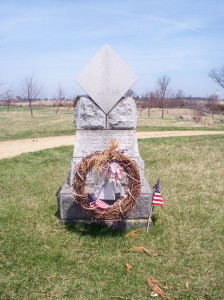 Union Major General Daniel E. Sickles is one of the most controversial figures at Gettysburg.
Union Major General Daniel E. Sickles is one of the most controversial figures at Gettysburg.
Commander of the Union 3rd Corps during the Gettysburg campaign, General Sickles was also a politician before & after the War Between the States.
On July 2, 1863, General Sickles was not at all happy with the position on the line that he was assigned. He felt the higher, more elevated ground to his front would be more defensible & offer his artillery a better field of fire. So, without authorization to do it; General Sickles moved his entire corps forward. This act unhinged the Union line & left the, now exposed, 3rd Corps vulnerable to attack from multiple directions & this is exactly what happened.
There are those who consider General Sickles the “Savior of Gettysburg” & there are those who view his acts as treasonous.
General Sickles was mounted, providing encouragement to his men on July 2nd when a 12 pound confederate cannon ball struck him on the right leg. The general’s horse was unhurt but, the injury would result in amputation for Sickles.
The small diamond shaped marker found on the grounds of the Trostle Farm was placed there in 1901 & marks the location of General Sickles’ wounding.
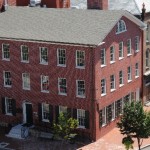
The David Wills Story
January 16, 2015One of the most popular stops, and one you surely don’t want to miss on your trip to Gettysburg, is the famous David Wills house on Lincoln Square. No one could have guessed that this prominent landmark would have morphed from a commercial building that housed several stores, to Mr. Wills’ home and law office in 1859. The largest building on the town square soon would play a key role in one of the most historical moments in history.
the most historical moments in history.
David Wills was a Gettysburg area native who graduated from the former Pennsylvania College, which is now Gettysburg College, as well as trained as a law student in the office of Thaddeus Stevens. Eventually serving as a judge for the 42nd Judicial District, Wills was a powerful figure in Gettysburg who served several other important roles. These roles included:
- Burgess of the Borough of Gettysburg
- County Superintendent of Adams County Schools
- Bank of Gettysburg director
- Trustee of Wilson College and Dickinson School of Law
When the Civil War came around, confederates ended up occupying the town in the first few days of July 1863. Wills jumped into action and invited citizens into his cellar, and on the first floor provided aid to the wounded even after the battle had moved on.
Governor Andrew Curtin would soon visit the battlefield with David Wills a week later on July 10th, and astonished by how poor the conditions were, appointed Wills a state agent and put him in charge of ensuring proper burials for each person that was killed.
This appointment led to the inception of the Soldier’s National Cemetery, a place for all Union dead to be buried. For the cemetery dedication Wills would invite Edward Everett as the main speaker in addition to President Lincoln. Lincoln would stay in Wills’ home, and this would become the location where he would finish revisions to the famous Gettysburg Address.
The David Wills house is now a preserved landmark in Gettysburg where you can visit the very location President Lincoln put the finishing touches on one of the most famous speeches in history. If you’d like to hit several of the historic landmarks at once, we recommend one of our value plans, which offer you a great discount on some of the area’s attractions, totaling five to seven hours of action-packed entertainment.
Battle of Gettysburg FAQ’s
August 20, 2014When you are dealing with such rich historical series of events like the Battle of Gettysburg, there may be some questions that pop up as you learn more about this fascinating junction in our nation’s history. Our tour guides go through a rigorous testing process that allows them to answer just about anything you might want to know. In speaking with them and talking with people who are planning on a visit, we’ve put together a list of some of the most common questions we get each day shed some light on this famous battleground.
- Where is the Gettysburg Battlefield?
- The Gettysburg Battlefield is located in Adams County, Pennsylvania, and covers areas around and throughout the borough of Gettysburg.
- How large is the National Park at Gettysburg?
- The National Park at Gettysburg covers roughly 6000 acres!
- How many monuments are on the Gettysburg Battlefield?
- There are a wide range of monuments on the Gettysburg Battlefield and we encourage you to see them all! Offering around 1328 monuments to see, you may need more than a one day trip to see them all.
- Who put the monuments on the Gettysburg Battlefield?
- Was there fighting in the town of Gettysburg?
- There was some fighting in the streets of Gettysburg. Fortunately there was only one civilian casualty during the three days of battle. Unfortunately it was a young girl who was killed when a stray bullet came through two doors and struck her in the back killing her instantly. You can learn more about Jennie Wade and the Jennie Wade house on its history page here.
- Are there any homes or buildings that were here during the time of the battle?
- There are numerous homes and buildings that were here during the battle, and some still bear the scars from the fierce fighting that occurred. You can identify these homes or buildings by locating the small plaque between the doors and windows of the building that all say, “Civil War Building 1863.”
We hope this list covers one or more of the questions you may have had about the Battle of Gettysburg, but also understand you may have many more. If you’d like to see them covered in a future blog or want to reach out and find out for yourself, feel free to use our contact page and we’ll be happy to answer them for you!
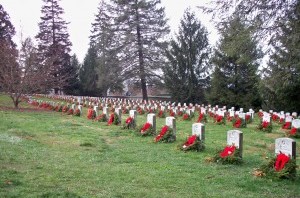
Where Are The Gettysburg Battlefield Soldiers Buried?
July 16, 2014Are you curious, as many of our guests have been here at Gettysburg Battlefield Bus Tours, where the soldiers who fought in the Battle of Gettysburg are buried? Fortunately you won’t have to search any further, as today’s blog will tell you exactly where you can find both the Union and Confederate soldiers burial sites, and then all you’ll have to do is book a visit here to Gettysburg to see them!
Union Soldiers –
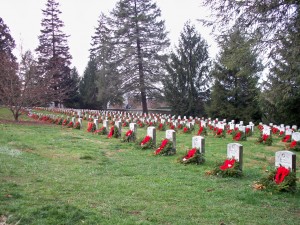
Most of the Union dead are buried in the Soldiers’ National Cemetery, which is located between Baltimore Street and Taneytown Road here in Gettysburg. It is right beside the local town cemetery and features the Soldiers National Monument in the center of it all. The Veteran’s Administration actually offers a database of burials that you can search by gravesite location, as well as name, date of birth, and date of death.
Confederate Soldiers –
The southern soldiers were actually removed from the battlefield roughly nine years after the battle and taken to southern cemeteries with specific locales set aside for the Gettysburg campaign casualties.
If you have a specific question you’d like answered, be sure to let us know in the comments, or leave us a message on our social media channels that you can find at the bottom of this page. We’re more than happy to help, and look forward to your visit!
Union Brig. General Alexander Schimmelfennig
July 15, 2014
History is to be found everywhere in the town of Gettysburg. In addition to the monuments, plaques & cannons, useful tools called “Wayside Markers” are also available for the serious or casual student of the battle. A great deal of valuable insight may be obtained by paying careful attention to these markers as you visit the area.
On such marker can be found at the former home of Henry & Catherine Garlach – the address being 319 Baltimore Street.
This marker relates the story of Union Brig. General Alexander Schimmelfennig who, on July 1, 1863, found himself wounded & riding through the town desperately trying to avoid capture (or worse) by the advancing Confederates.
With his horse shot from underneath him, General Schimmelfennig realized that he would not make it back to the Union lines. He quickly sought shelter under a drainage ditch cover behind the Garlach home.
Under cover of darkness the General moved out from the cover & squeezed himself between a wood pile & a hog swill barrel. Mrs. Garlach discovered him while feeding the hogs & managed to discreetly supply him with food & water during his concealment.
General Schimmelfennig was not able to return to his men until the last of the Confederate sharpshooters left the town on July 4th.
The George Spangler Farm Civil War Hospital Site
July 9, 2014Friday, June 06, 2014 to Sunday, August 10, 2014
Time: 10:00am-2:00pm
Educational Event
The George Spangler Farm Civil War Hospital Site is one of the most intact Civil War field hospitals used during the battle of Gettysburg. During and after the battle, the Spangler family’s homestead was occupied by the Union army’s Eleventh Corps who used the buildings and fields as a hospital for some 1,900 wounded Union and Confederate soldiers.
Free admission and shuttle tickets are available at the Ticketing Counter inside Gettysburg National Military Park Museum & Visitor Center. The site is accessible by shuttle only. Tickets may only be obtained the day of your visit to the Spangler Farm.
Program Schedule
An Army Field Hospital: The George Spangler Farm
11am-Noon
Join a National Park Service Ranger at the George Spangler Farm and discover the field hospital where over 1,900 soldiers wounded in the battle of Gettysburg were cared for.
Arts and Trades of the Past
10:15-10:45am
12:15-12:45pm
Join living historians demonstrating trades of the period and get a glimpse at civilian life at the farm.
History Comes to Life: War Reaches the Homefront
1-1:30pm
View a dramatic ensemble cast of soldiers and civilians who witnessed the battle of Gettysburg and the George Spangler Farm’s transformation from home to hospital.
Interactive History Encampments
10am-2pm
Mingle with living historians in authentic camps portraying the civilian experience, civilian aide societies, Civil War field medicine and Union artillery.

